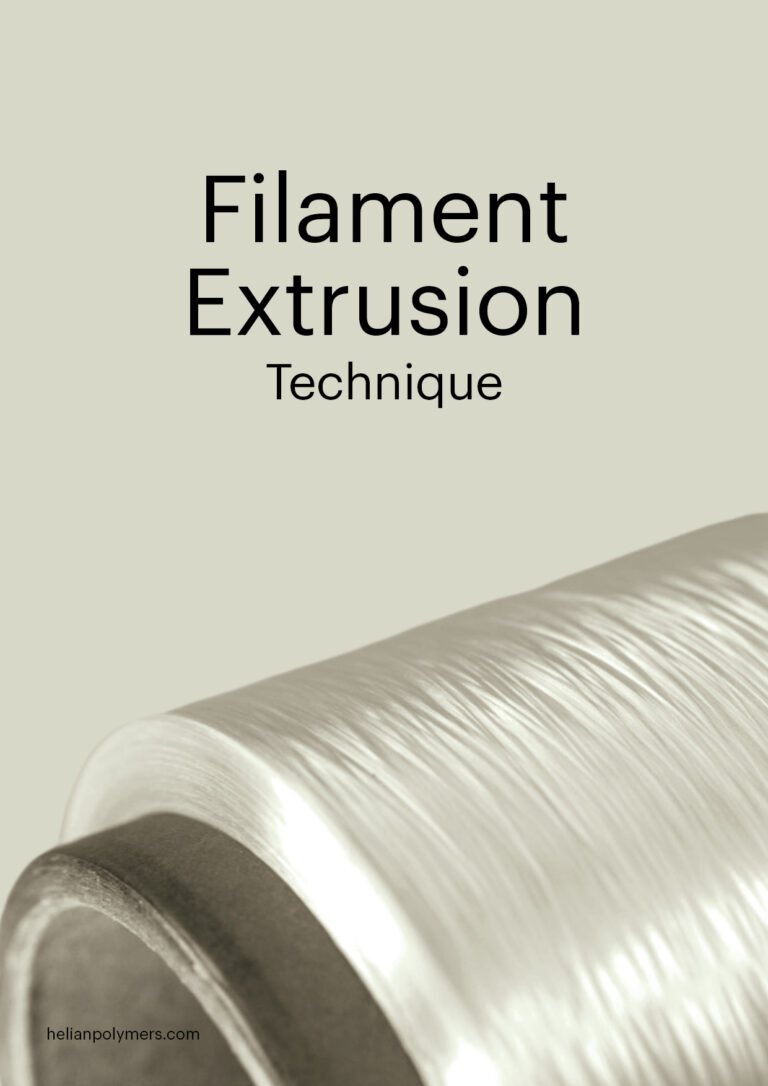Processing of PHA
by Filament Extrusion

In this post, we delve into another prevalent method for plastic processing: filament extrusion. Our primary focus is on the innovative and alternative material, PHA (Polyhydroxyalkanoates), and its behavior during the filament extrusion process. We’ll also discuss the advantages and potential of PHA, and the challenges and important considerations when selecting this material for filament extrusion.
What is filament extrusion?
Filament extrusion is a common manufacturing process where the material is pushed or drawn through a die of the desired cross-section. It’s a popular method for producing plastic parts with a consistent cross-sectional shape, such as tubes, straws, or filaments for 3D printing. Because of its versatility and efficiency, filament extrusion, also sometime called mono-filament extrusion is widely used for the production of a wide range of products. PHA filaments are being developed to be used in applications like geo-textiles or in sporting apparel.
What is PHA?
PHA (Polyhydroxyalkanoates) is a bio-based polymer produced naturally by bacteria during their growth phase, also known as fermentation. Its environmentally friendly properties make it a compelling alternative to traditional plastics. PHA can be composted and is readily biodegradable in various environments without leaving harmful residues, like microplastics, making it a sustainable and responsible choice for plastic replacement.
How does PHA behave in filament extrusion?
While most PHA types can be processed similarly to other plastics, there are some unique characteristics to consider.
For instance, PHA has a lower melting temperature than many conventional plastics, meaning it consumes less energy. However, most PHA types also require longer cooling periods, or more energy from heat to facilitate the polymer’s crystallization. Furthermore, PHA is more sensitive to moisture and high-shear rates than most other plastics, which can result in quality issues with the final product if not handled correctly within its proper processing window. Hence, it requires careful storage and preparation, like pre-drying, to ensure optimal results.
Conclusion
Proper filament extrusion of PHA requires a thorough understanding of the material and its unique properties, as well as modifications to the standard processes, in order to achieve a desirable processing window. However, with its environmentally friendly attributes and potential for high production speeds, PHA undoubtedly offers the potential to become a more sustainable and efficient alternative to traditional, petrochemical plastics. With the right knowledge, preparation, and attention to detail, the use of PHA in filament extrusion can be a profitable, sustainable, and responsible choice for the future of plastic production.

Try PHA
Want to learn more about PHA and its role in filament extrusion? Reach out to our team of experts. We’re here to help you navigate this innovative material and its potential in your manufacturing processes.
